Adventures in Hydroponics
July 24, 2023 • 4 minute read
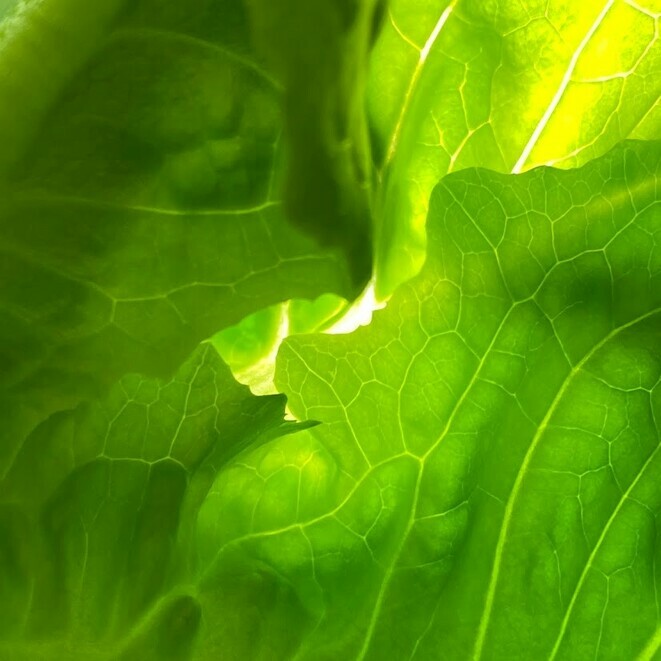
I’ve always thought of the humble gardener as some sort of wizard. They plant a seed, watch it sprout, then carefully assist the plant until it’s ready to harvest. I had previously tried to keep a couple of succulents alive, with almost all of them rotting or dying out due to a lack of water, growing food seemed even further out of the question. My adventure into hydroponics started out of this frustration: “how the hell do other people grow plants so well?”
Back in 2021, my wife and I were looking for basil on our weekly shopping trip and the refrigerated section was fresh out. I noticed that my local grocer was practically giving away full basil plants for less money than a tiny packet of basil leaves. Bingo. We bought two of the plants, carefully taking them home with us amongst our groceries.
We promptly stripped most of the leaves off to make fresh pesto, and after dinner I felt a bit guilty about throwing away the plants we had just bought, only to rip the leaves off and toss in the trash. It felt extremely wasteful. To think about all the energy that it took to plant and grow the basil, to transport it to my local grocery store, and for me to transport it to my house. Wouldn’t the world be better off if everyone could eat more locally? I thought to myself, “How hard could it be to keep these guys alive for a few more weeks?” which launched me down the rabbit hole of indoor gardening, specifically, the practice of hydroponics.
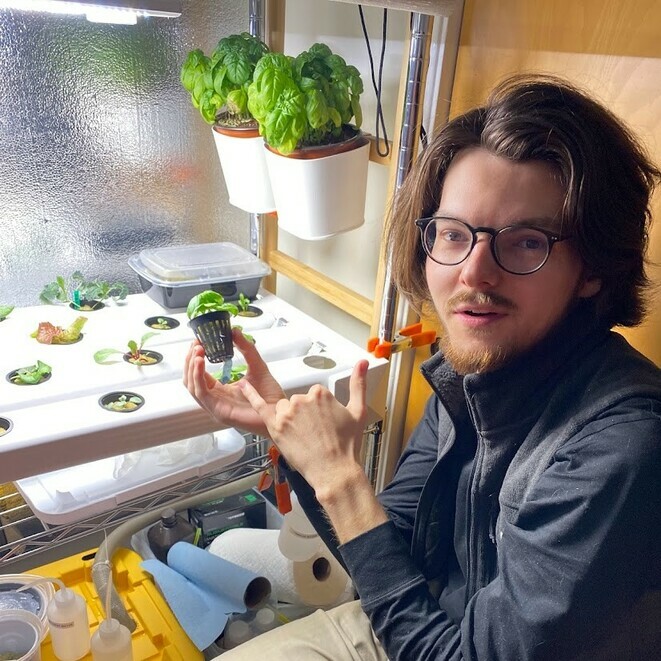
Me with some baby plants, just big enough to fit into the NFT system
For anyone with a backyard, growing plants can be quite easy. If you’ve got sun, and remember to water the flower bed, most veggies will happily grow. Largely unassisted too, with the exception of a soil change or two every season. The problem for us, is that we were living in a second floor apartment with no access to a back garden or side yard. For me, hydroponics was an obvious choice: we had limited space, we would need artificial lighting anyways, and we didn’t want to deal with soil indoors.
Hydroponics systems are diverse and varied, from the simple Kratky Method to the more finicky Nutrient Film Technique. Any hydroponic method supplies the plant three things: water, light, and nutrients. Instead of a plant getting its nutrients from the soil, it instead gets its nutrients from the water, growing in an inert growing medium. There are a ton of growing mediums like rockwool, perlite, coco coir, leca pebbles, and even pool noodles! Anything that will support a plant’s root system and allow water to flow through it will work here.
For the sake of over-doing this side project, I decided to build a Nutrient Film Technique (NFT) system. This system is typically used by commercial growers to grow lettuce and other herbs quickly and with less water and labor. Plants are suspended above a thin film of water, containing nutrient salts. This technique encourages deep root growth by maintaining a humid air pocket for the air roots. In a typical watering cycle, these roots will change depending on the humidity within the soil. By having the dedicated water roots separated from the air roots, a plant can spend more energy producing leaves and fruit.
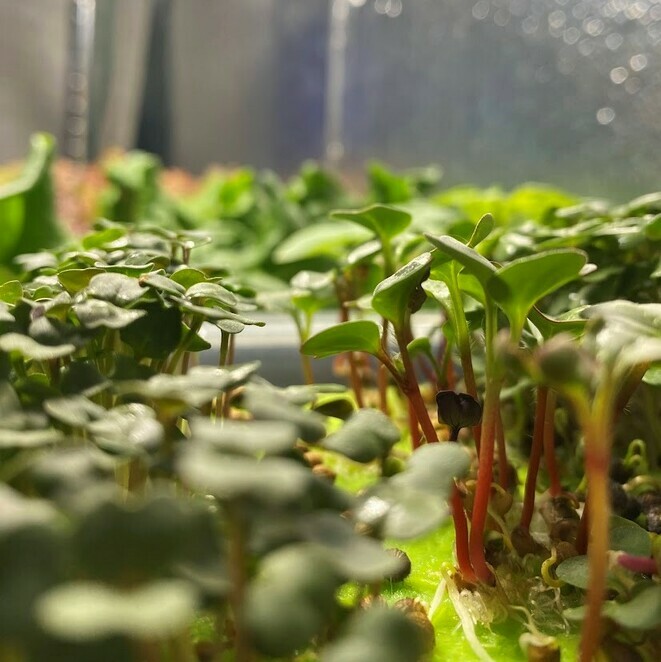
Some microgreen trays I was also prototyping
The system I built involves a 10 gallon tub containing a small aquarium pump, a few “rails” made from PVC downspouts and a collector drain made from a PVC post cover. The pump circulates and aerates the water constantly, keeping a thin film on the bottom of each channel for the plants to uptake water from. The light is a 1000W LED growing lamp on a 12-17 hour day cycle. New seeds are germinated in a transparent tupperware container until they’re mature enough to replant into the full system.
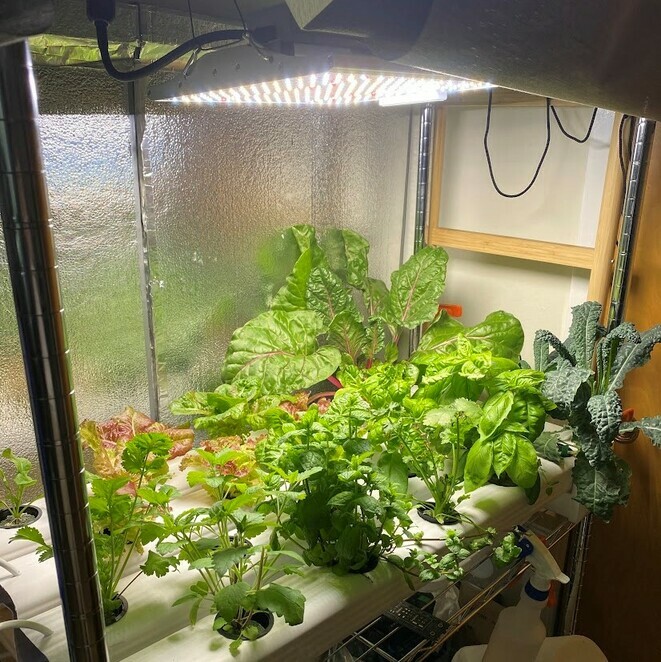
The fully grown out system, including Kale, Swiss Chard, Cilantro, Various lettuces, Basil
This setup requires a bit more work than a typical deep water cultivation unit, which just requires a tub and an air bubbler. However, I noticed that my greens were producing around 1kg of leaves a week, more than enough for a few salads. NFT is very scalable, these rails could be lengthened 2 to 3 times, without the need for a large reservoir sitting below each plant. I should also note that NFT is not ideal for plants with deep root systems like peppers or tomatoes, DWC or Kratky.
Looking forward, I hope to scale out my NFT system, potentially to the point where I could start selling heads of lettuce at a local market. I’ve got some ideas about tabletop systems that would be easy to DIY as well. In the meantime I’ll be keeping busy trying to grow my next crop or experimenting with a new variety of pepper.
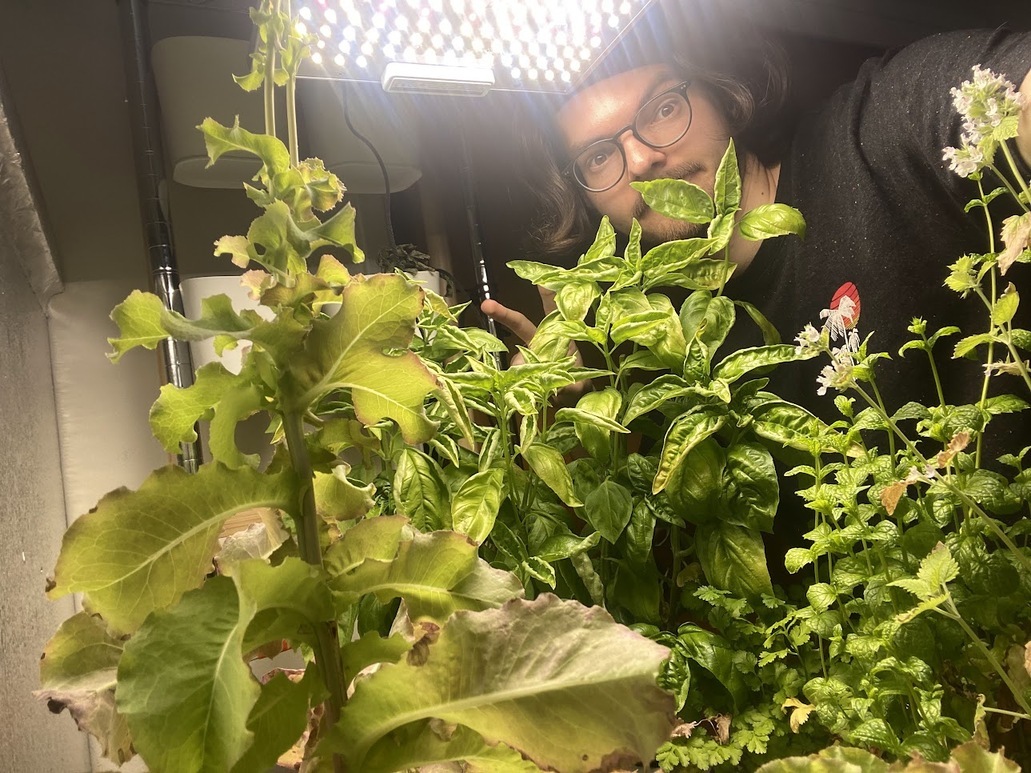 ⧠
⧠